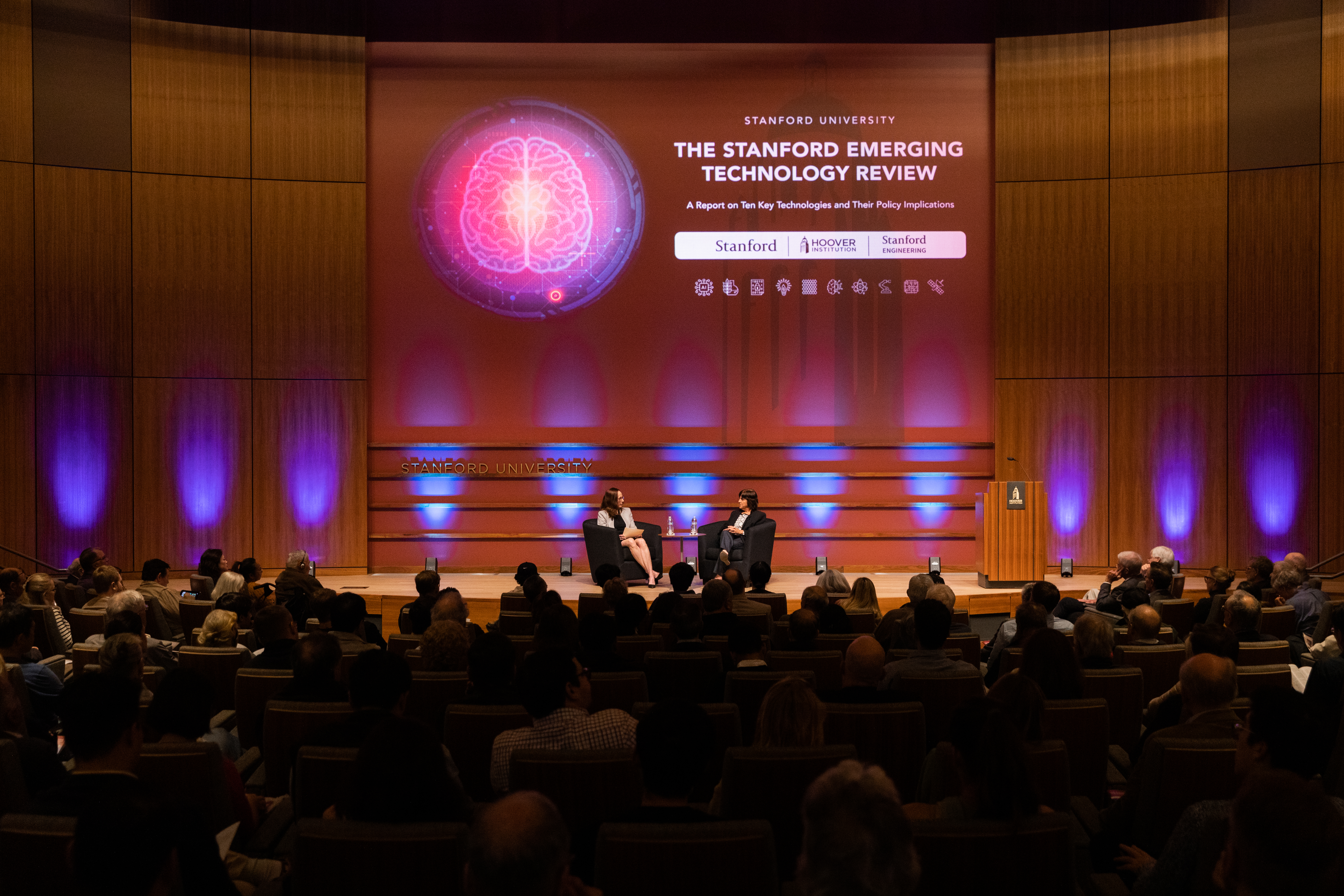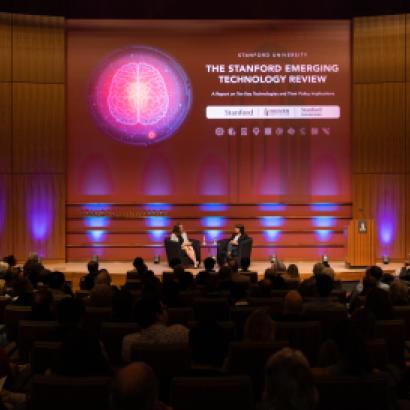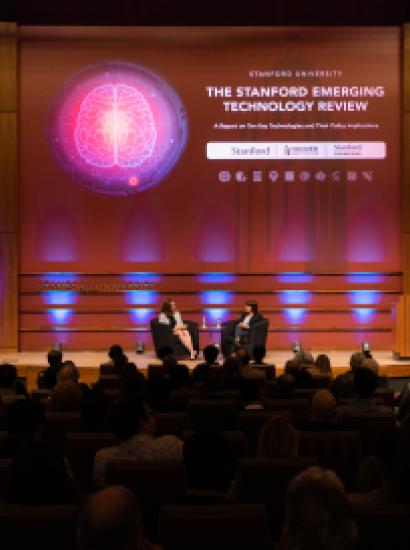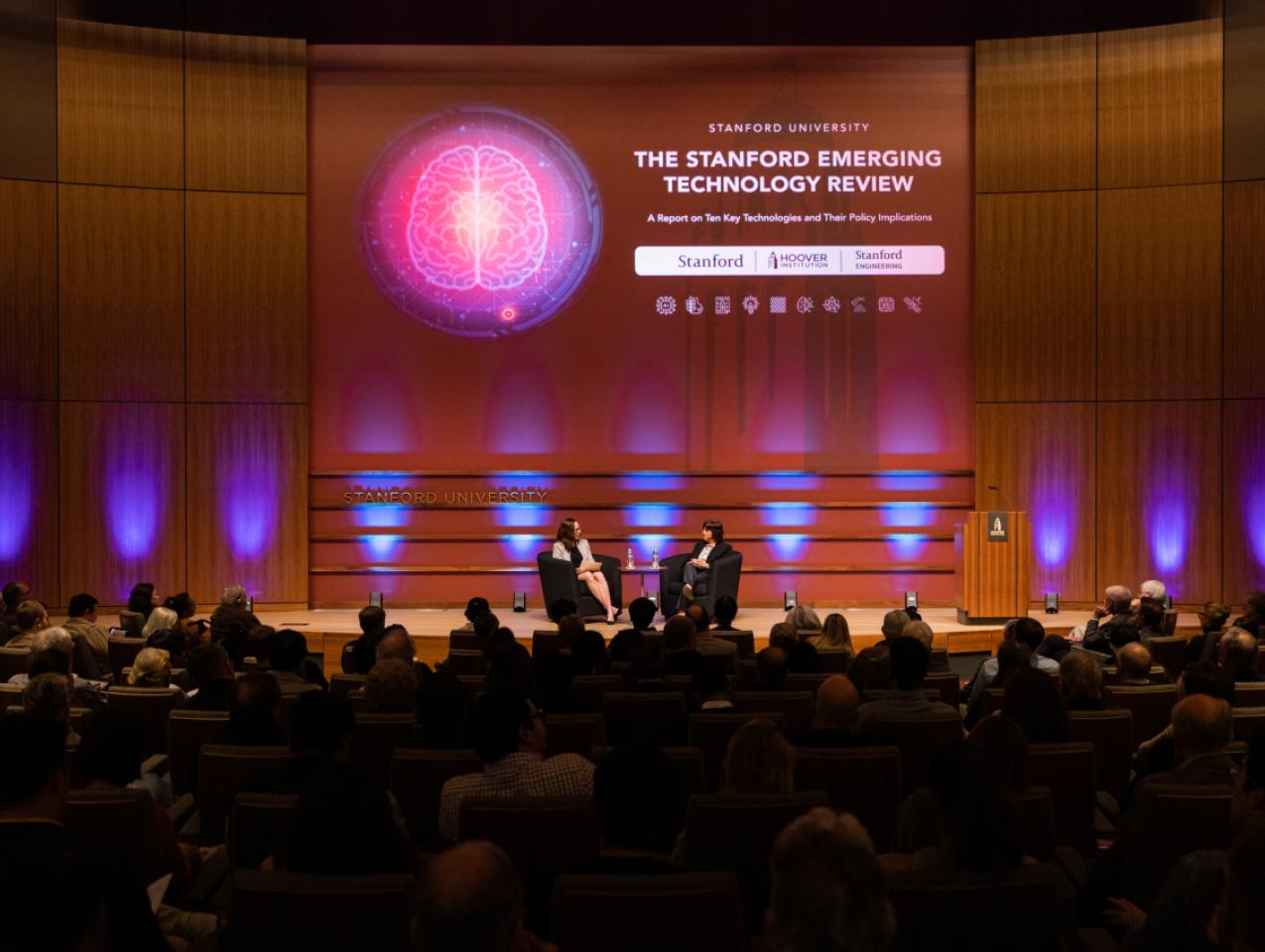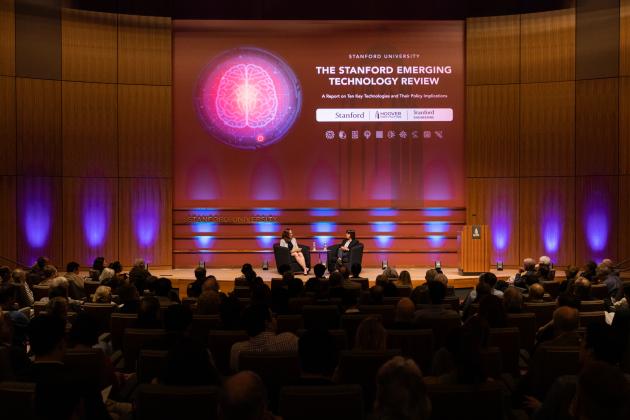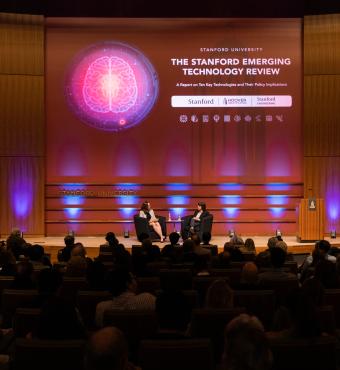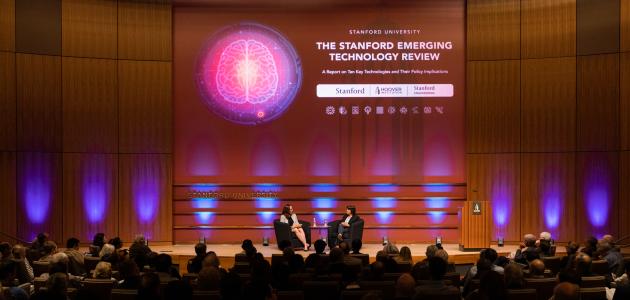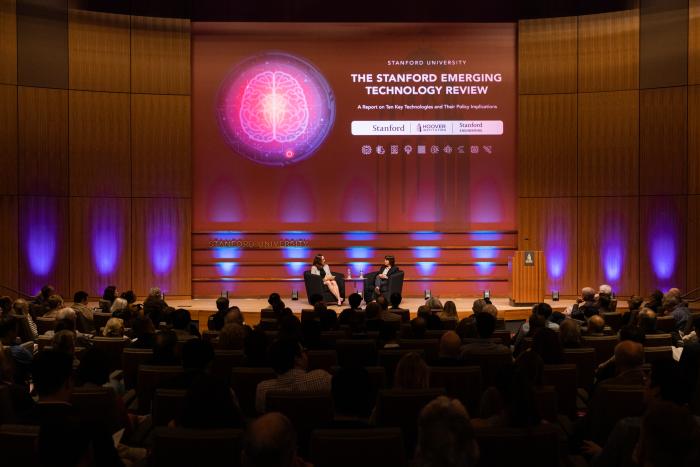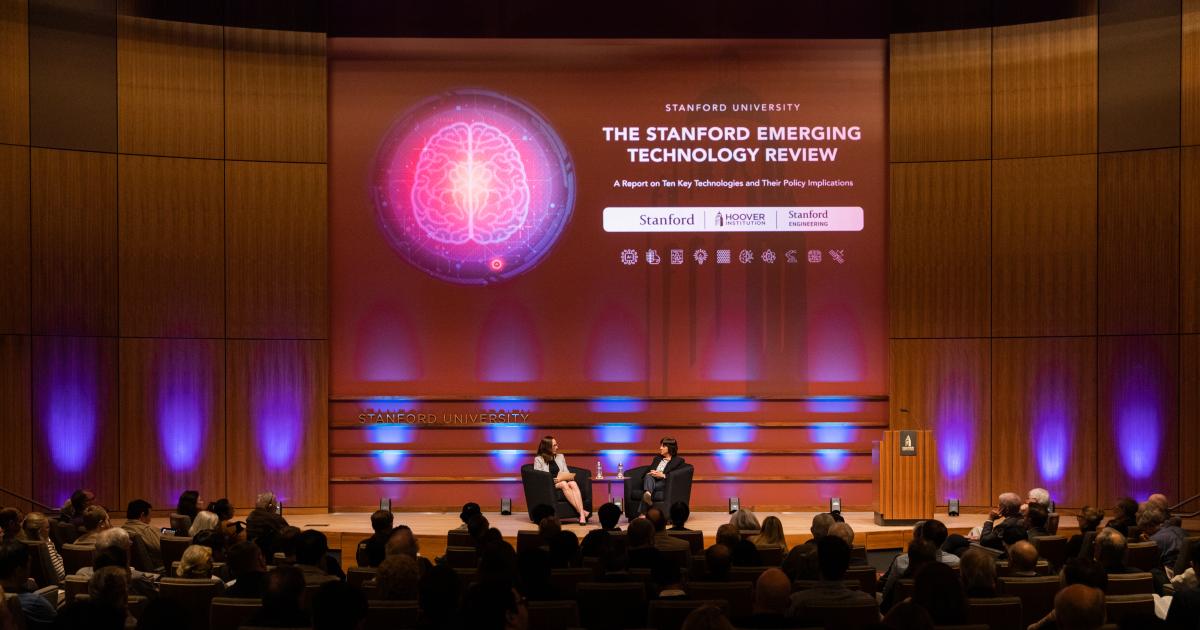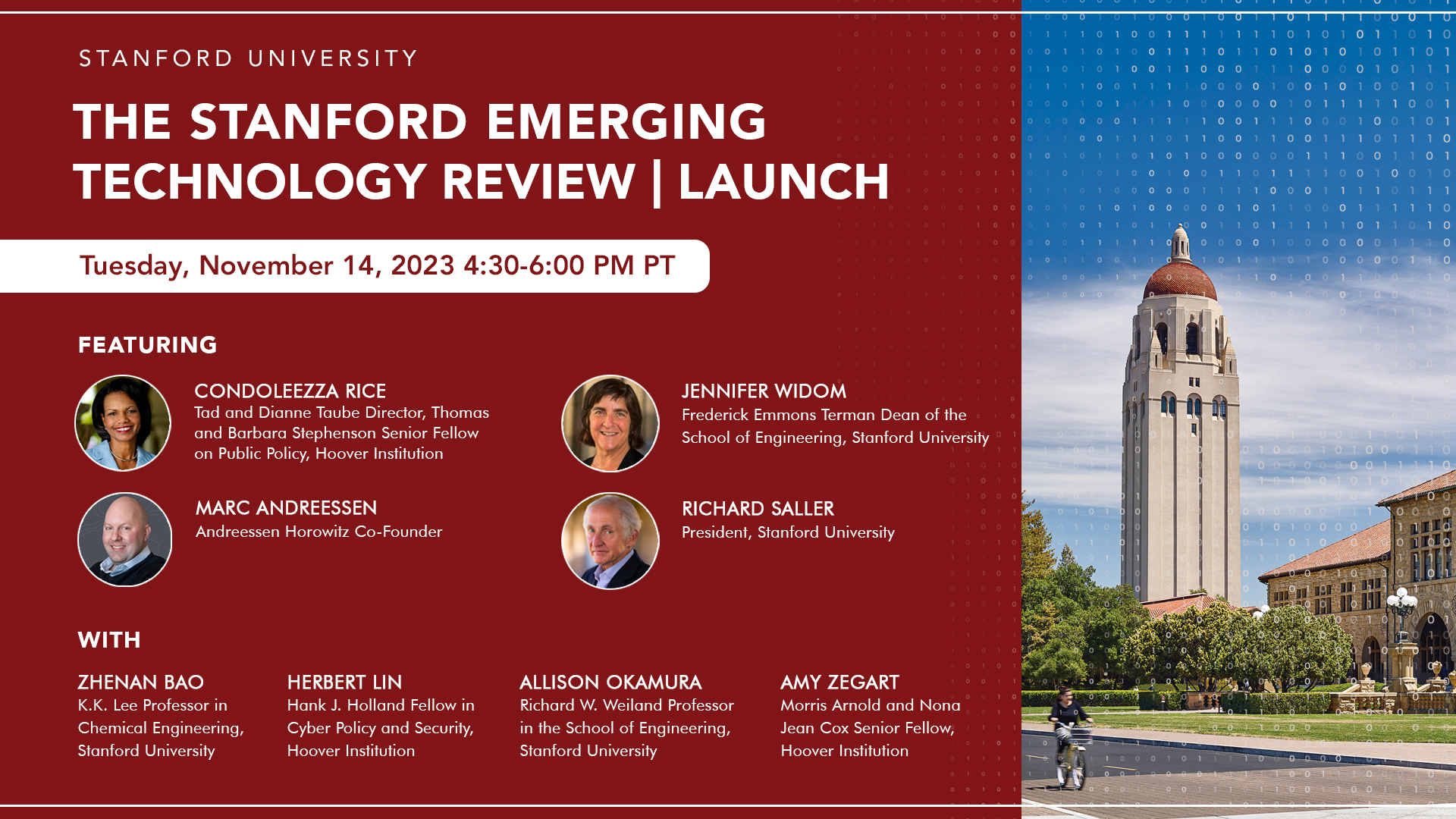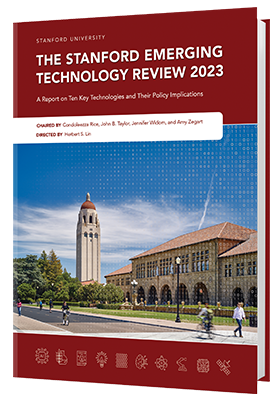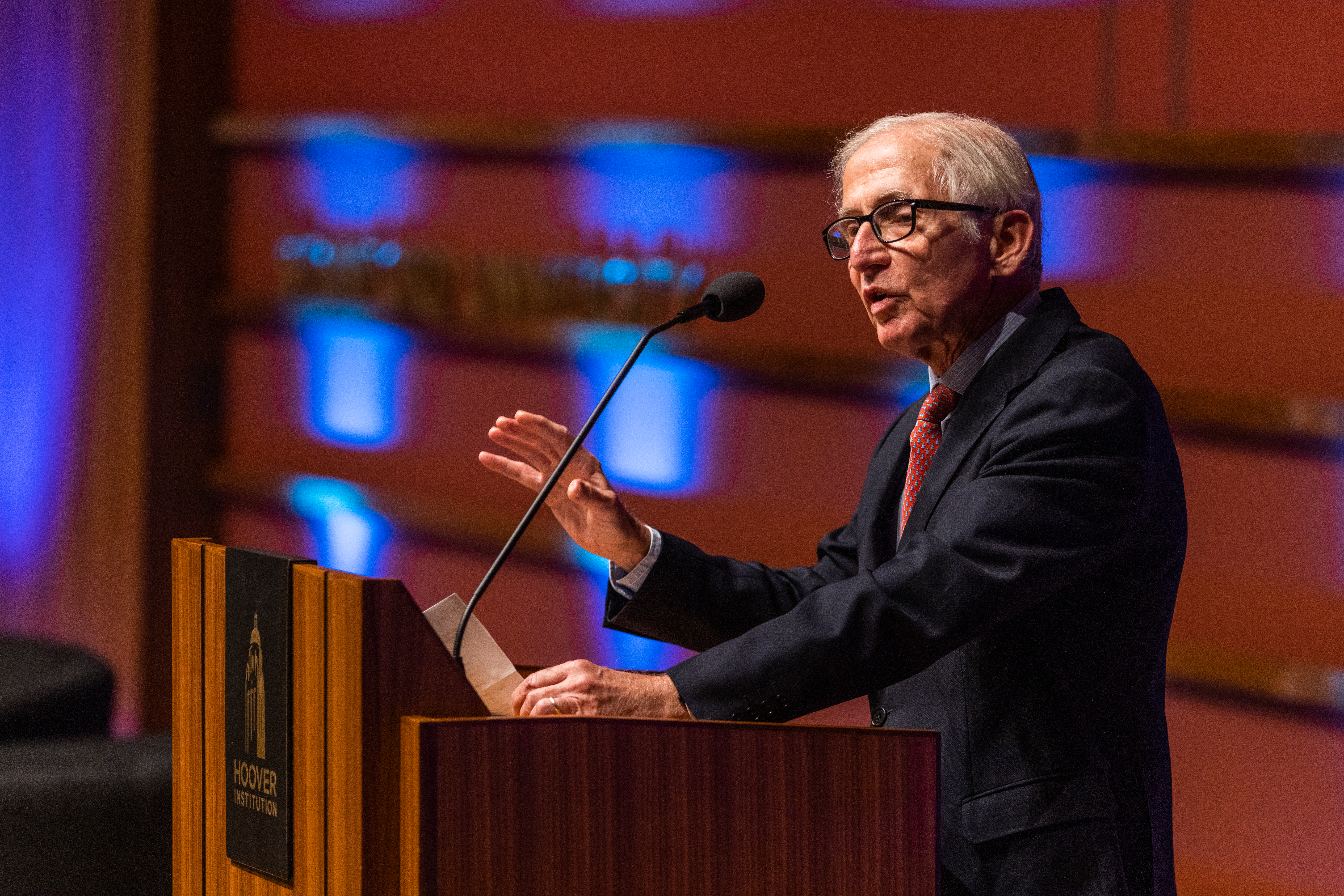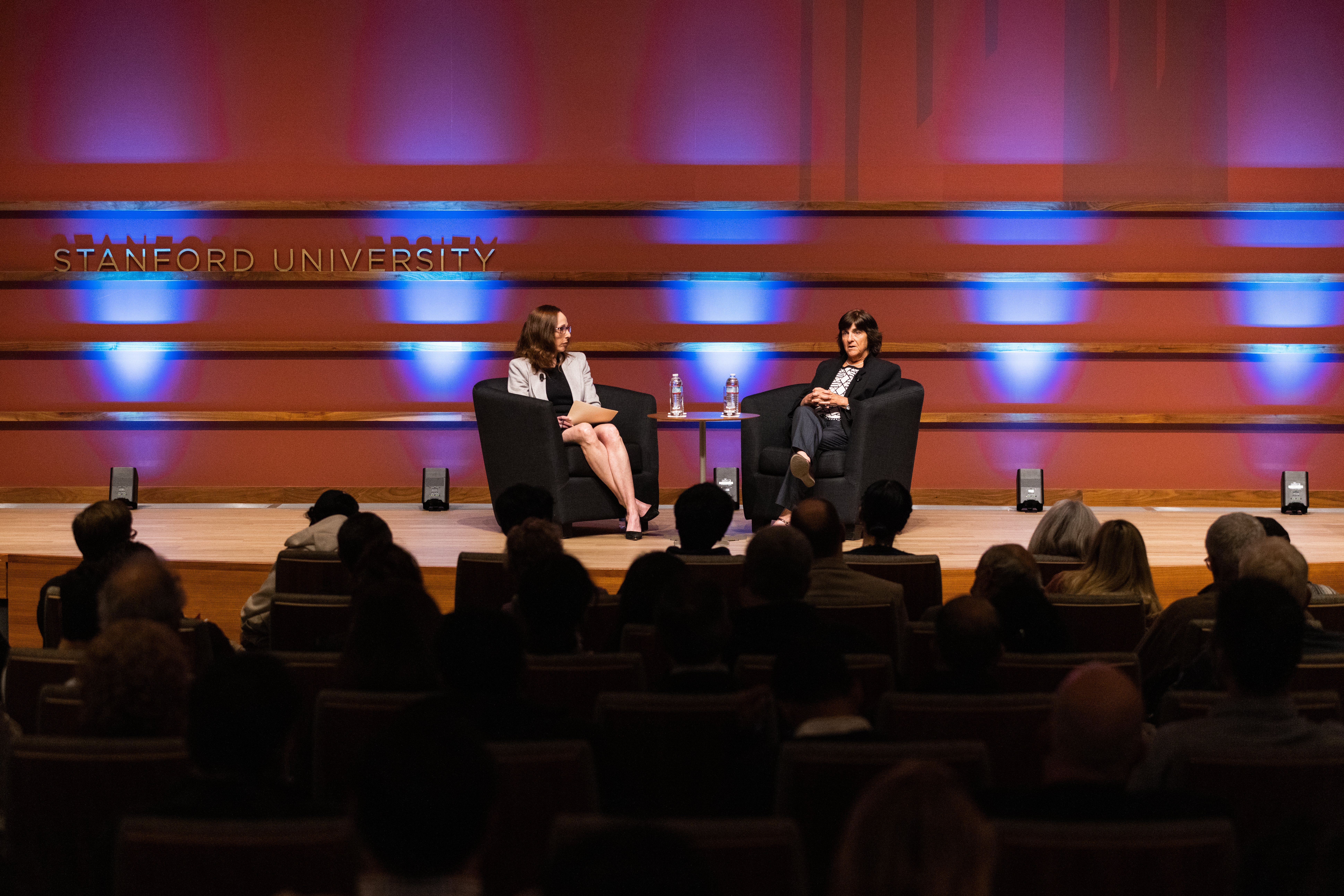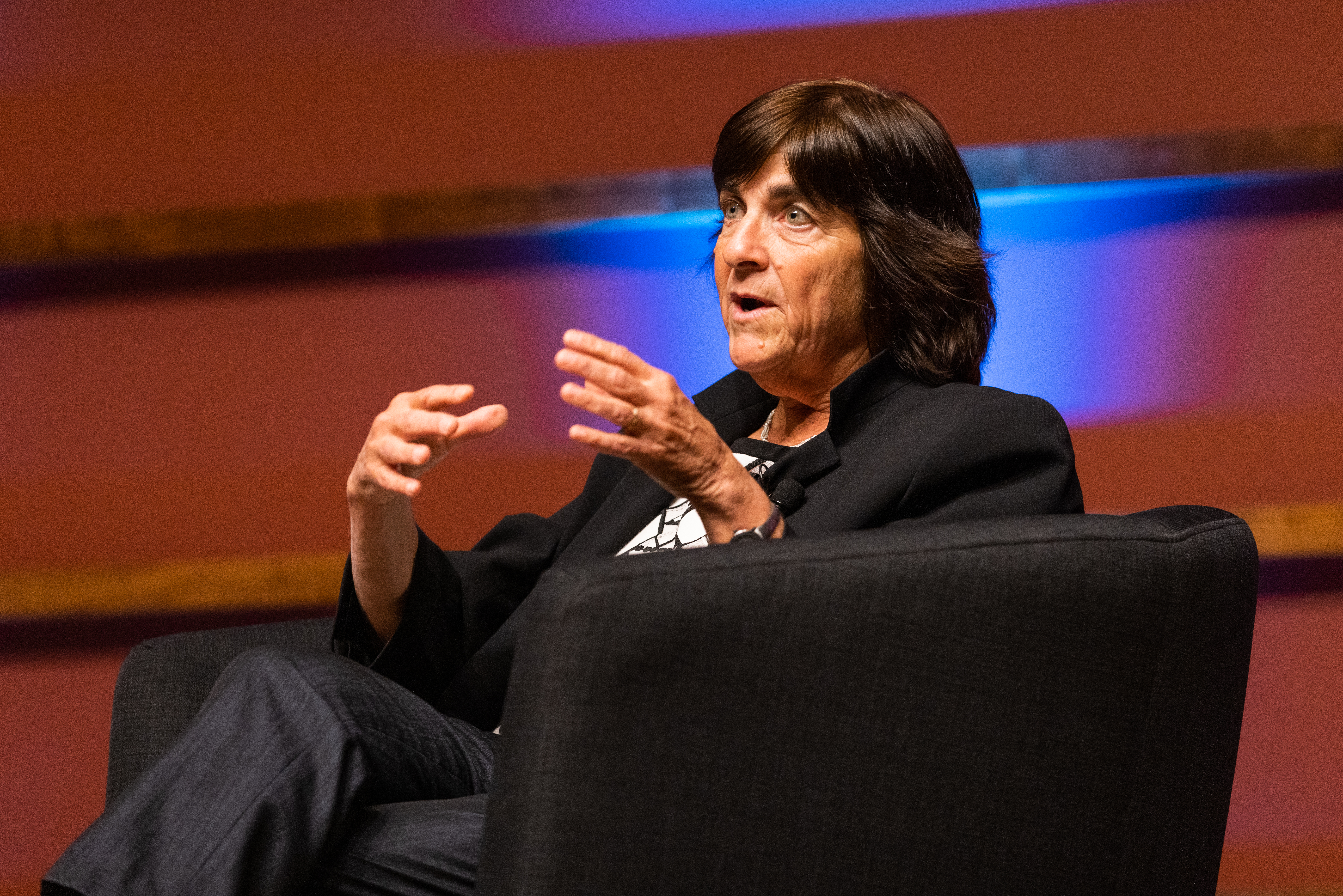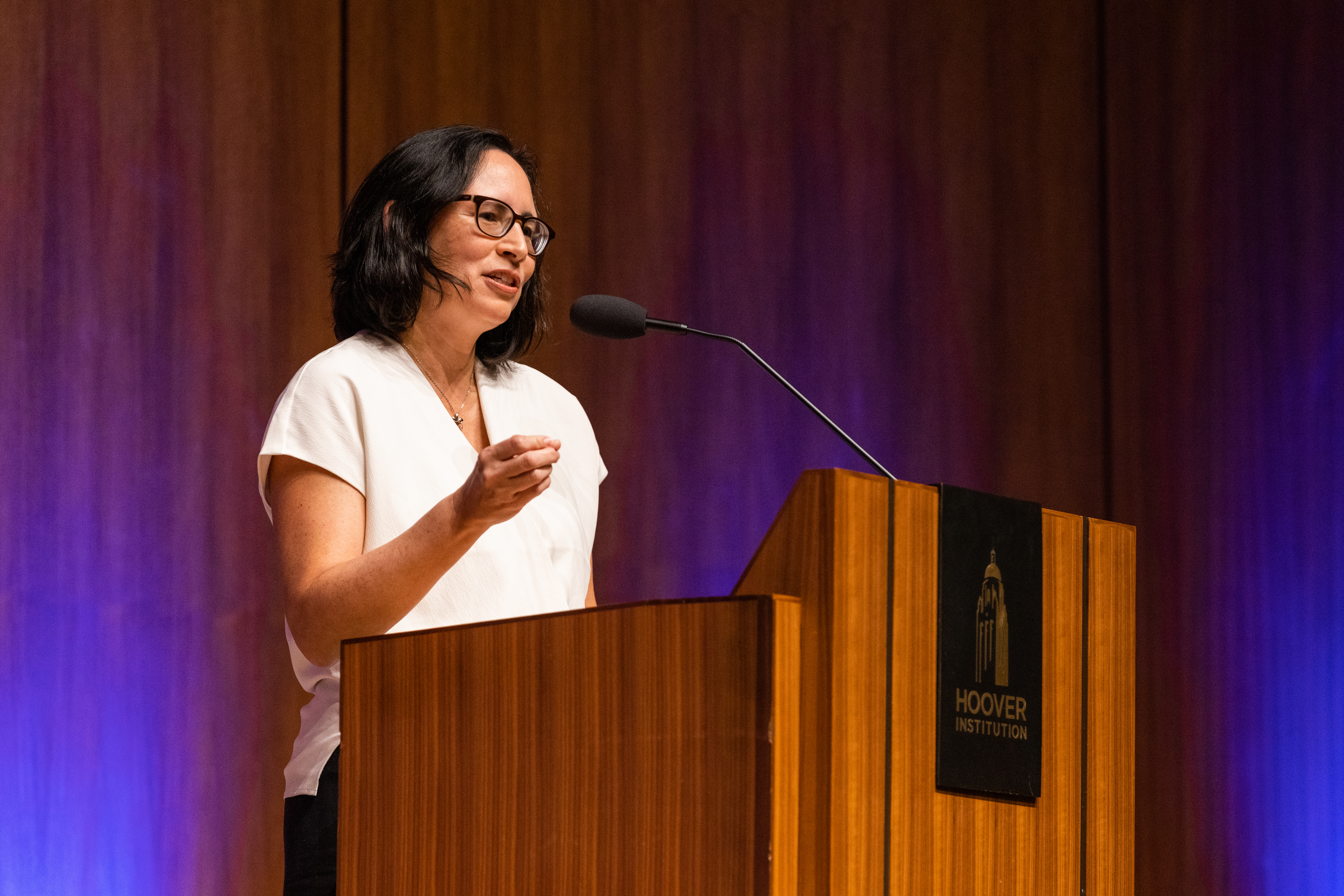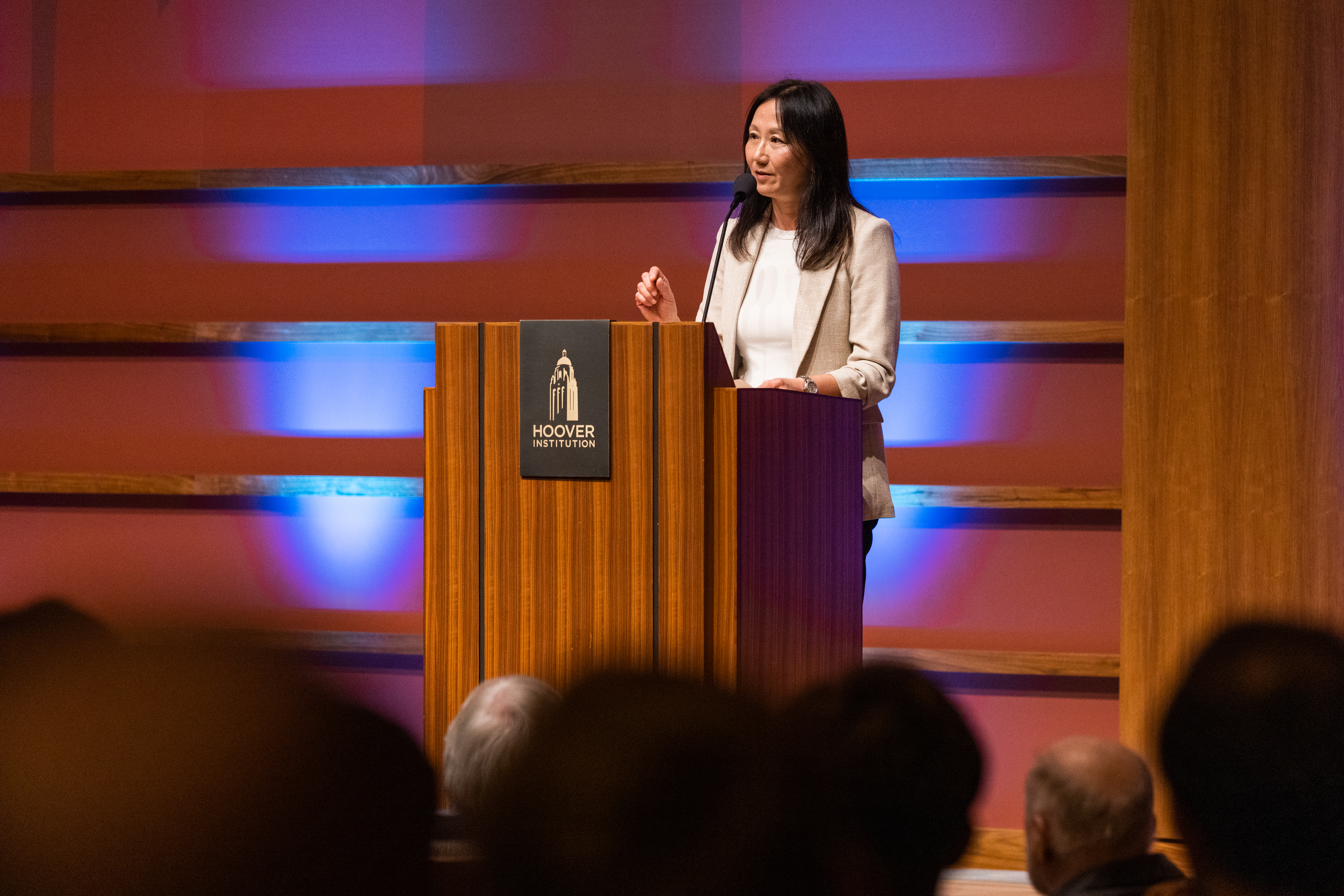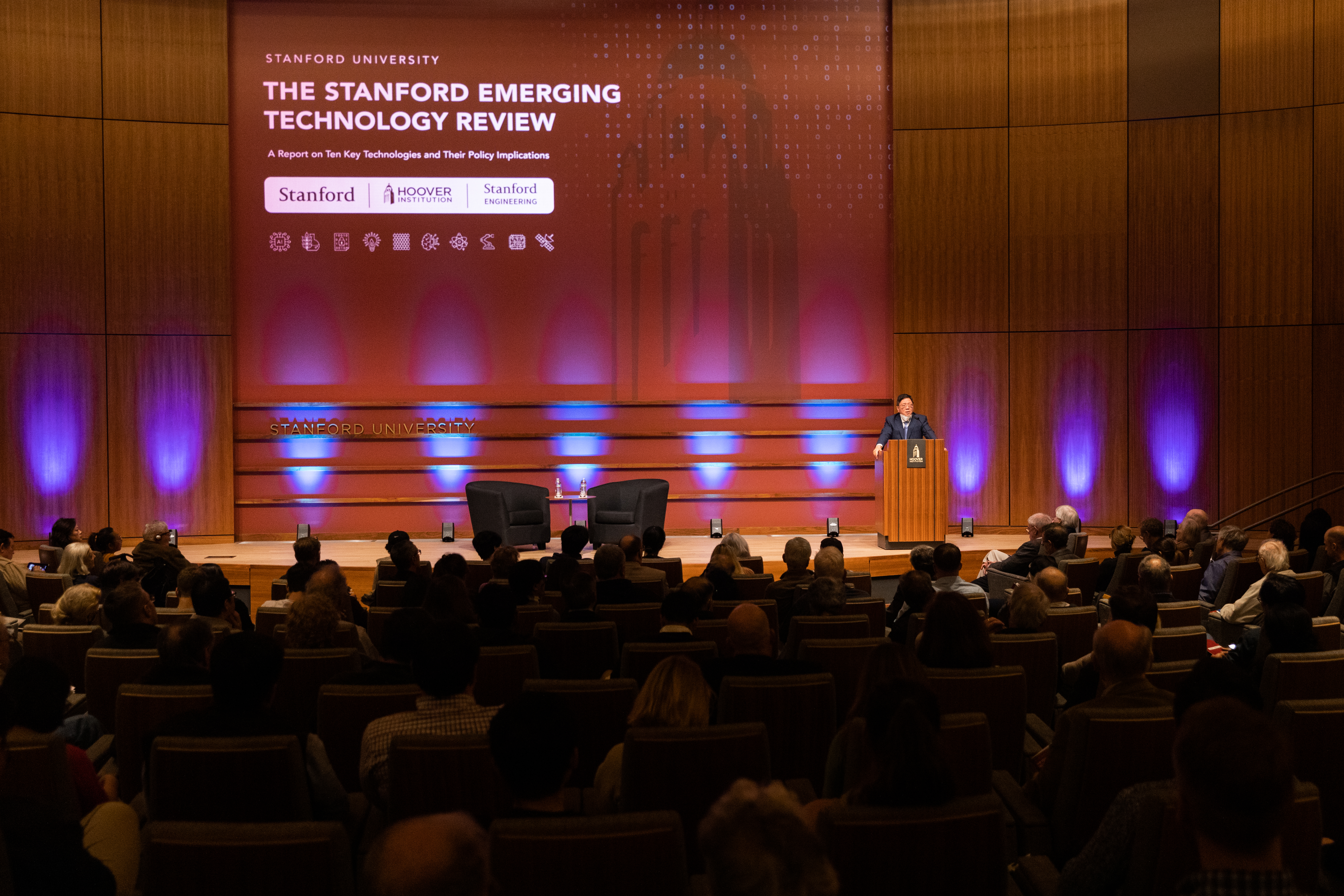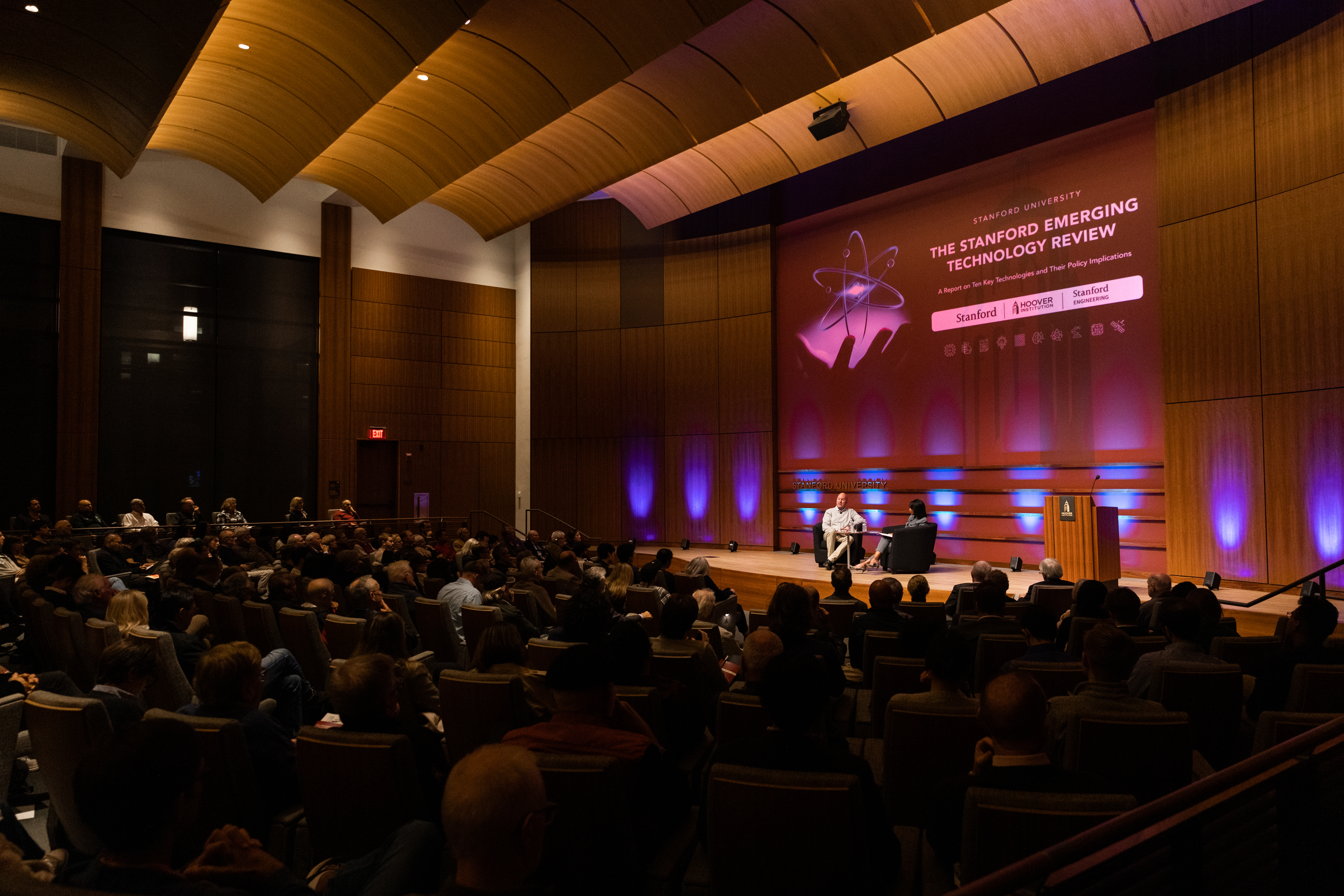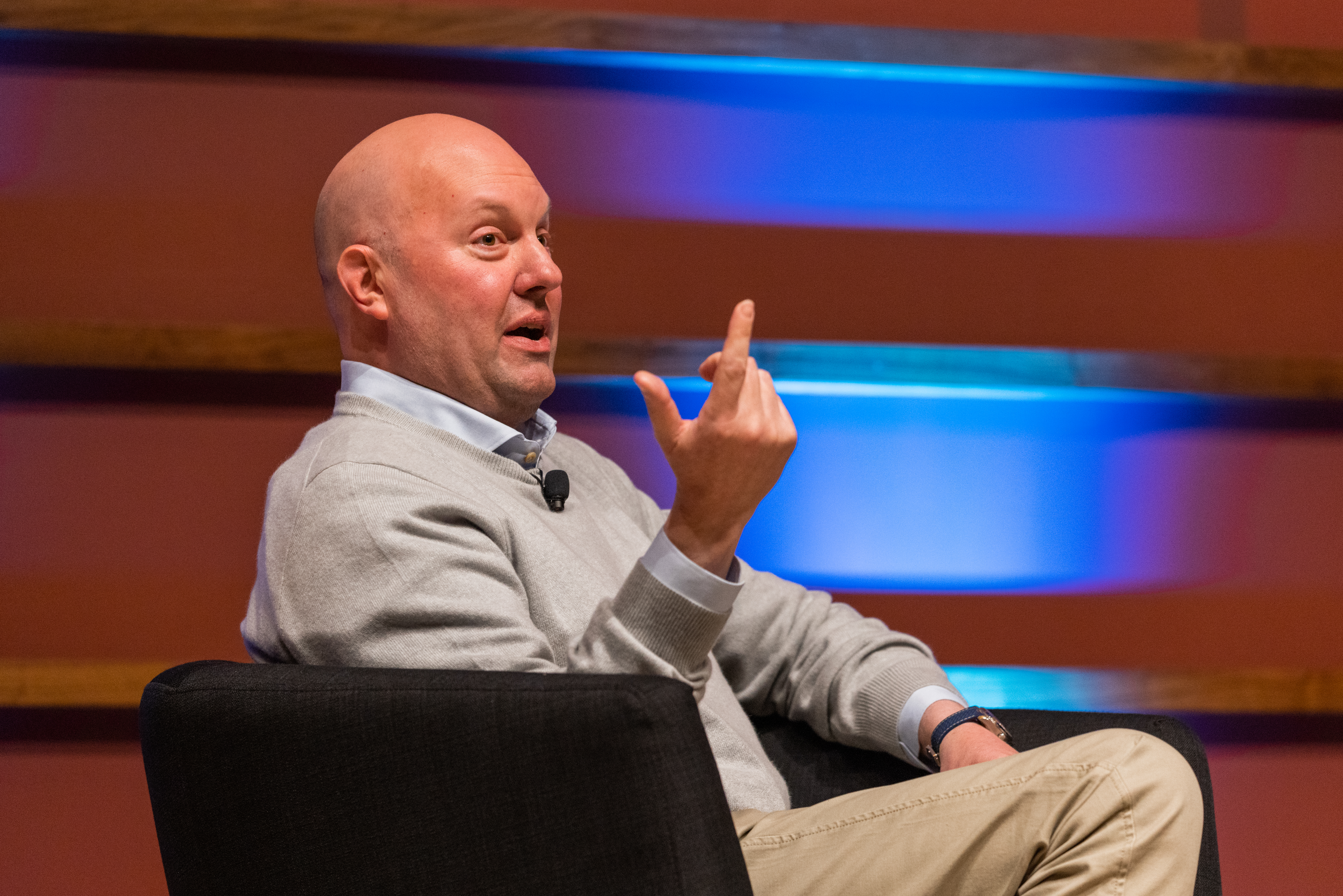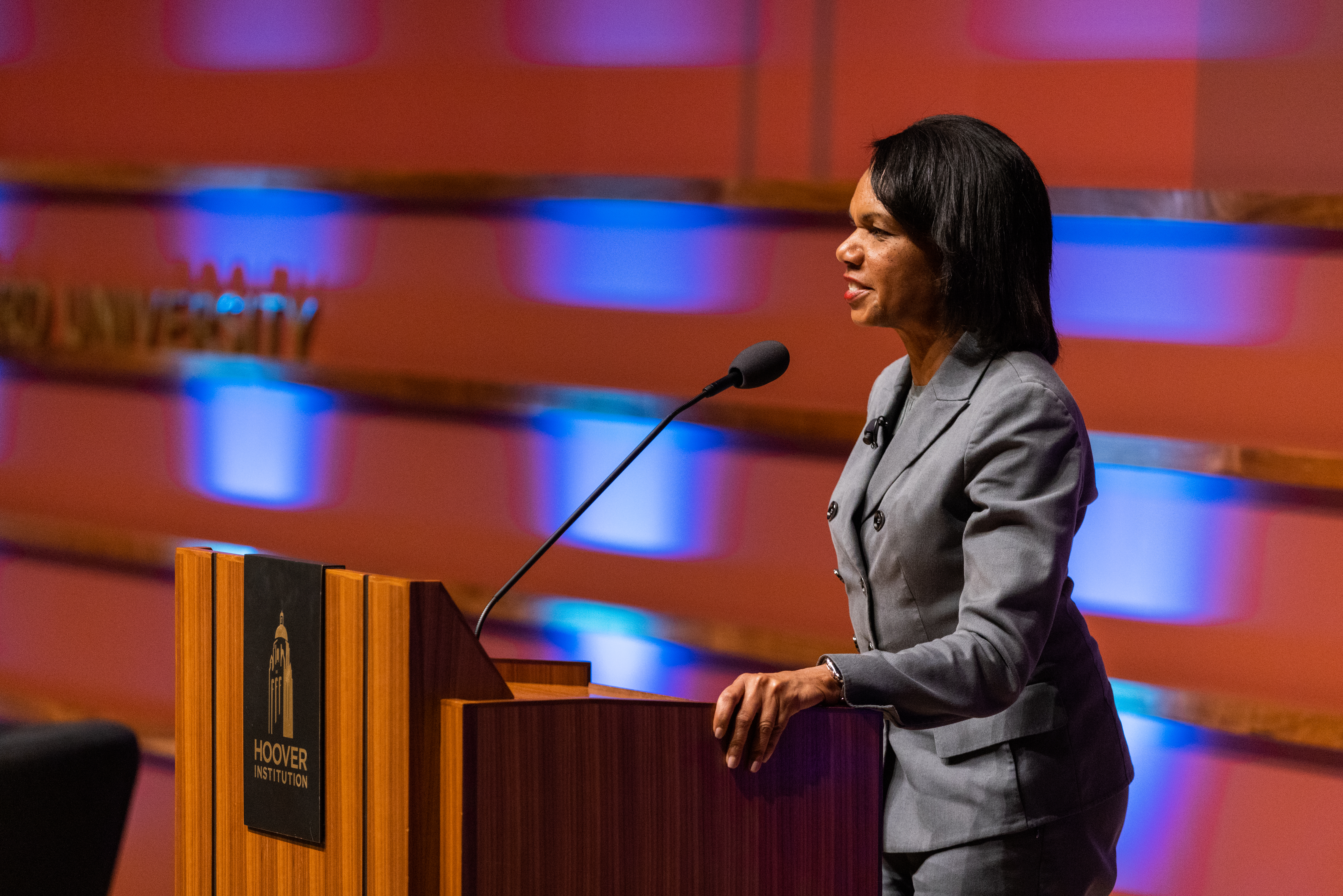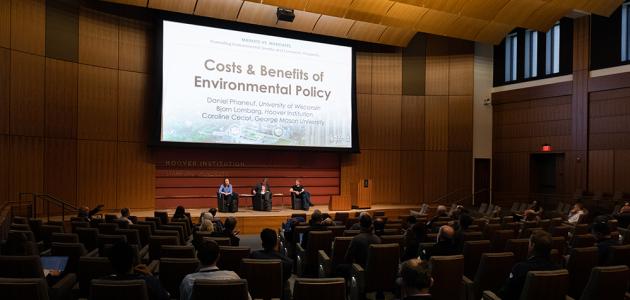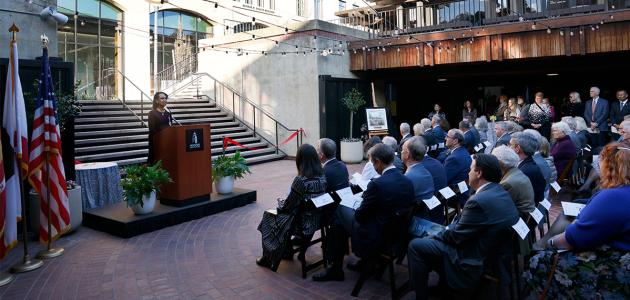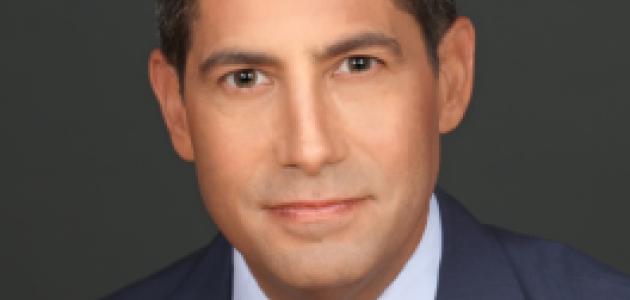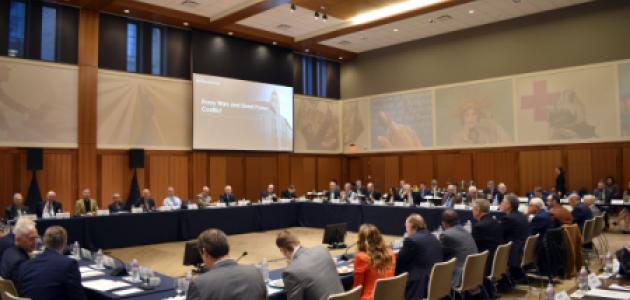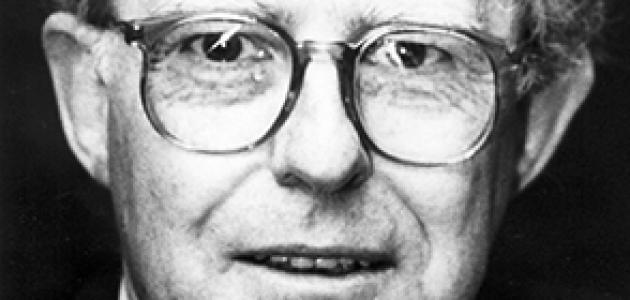Hoover Institution (Stanford, CA) – The Stanford Emerging Technology Review, an ambitious university-wide initiative dedicated to fostering a greater understanding among policymakers, industry leaders, and the attentive public about the breakthroughs and policy implications of frontier technologies shaping societies and economies, launched with a public event on the Stanford campus.
The initiative has enlisted the university’s leading scientists and engineers to produce a first-edition report, the Stanford Emerging Technology Review, intended to serve as a primer for ten pivotal technology domains. This report will be updated regularly to inform successive generations of leaders and citizens.
Stanford University president Richard Saller provided introductory remarks. The Stanford community audience listened to a conversation between two of the Review’s cochairs, Jennifer Widom (dean of the Engineering School) and Amy Zegart (the Morris Arnold and Nona Jean Cox Senior Fellow at the Hoover Institution), discussing the origins of the project. Additionally, two members of the Review’s faculty council, Allison Okamura and Zhenan Bao, Stanford School of Engineering professors and experts in robotics and material science (two of the technologies featured in the inaugural Stanford Emerging Technology Review report), respectively, and the Review’s director and editor-in-chief, Herbert Lin (the Hank J. Holland Fellow in Cyber Policy and Security at the Hoover Institution), offered highlights of the report. At the event's conclusion, Hoover Institution director Condoleezza Rice, a cochair of the Review, participated in a keynote conversation with tech entrepreneur Marc Andreessen, addressing concerns about how societies are grappling with the rapid pace of technological advances and their impacts.
"A Remarkable Collaboration"
Stanford president Richard Saller remarked that, based on its history as a catalyst for innovation in Silicon Valley, the university was uniquely qualified to undertake a project of such profound importance.
“[The Stanford Emerging Technology Review] represents a remarkable collaboration across the university,” said Saller.
A classicist by training and discipline, Saller explained how Stanford is not only home to laboratories conducting some of the world’s most cutting-edge scientific and technological research but also a leading academic center in social sciences, public policy, and ethics. Moreover, Stanford boasts faculty and alumni who have served in leading positions in government and industry and have been at the forefront of solving some of the nation’s most vexing policy challenges.
Saller also underscored how the Review represents Stanford’s multidisciplinary approach to learning. Five of the Stanford’s seven schools contributed to the publication of the report, as did 11 of its 15 independent laboratories, centers, and institutes.
The Origins of the Stanford Emerging Technology Review
In their conversation, Zegart and Widom explained that the Review was inspired by a visit to Stanford by US senator Mark Warner of Virginia, who inquired about research and developments in emerging technologies from the university.
Describing the collection and communication of this body of information to Warner, Zegart recalled, “It was amazing, and it was nowhere near enough. We realized that we needed to do more.”
Widom explained how Stanford’s engineering and science faculty were eager to engage in a greater dialogue about the broader implications of their work. She said that the Review is unique for the voice it gives to technological experts working in academia.
Academic innovation, she noted, is driven by curiosity, not market interests.
“Our faculty work on problems that they think are interesting, are challenging, are important, and are not driven by a need to make a profit,” Widom said, adding, “Our faculty are bringing to the Technology Review their impartial explanation of the technology—where it is now and where it is going in the future.”
Moreover, she said the Review gives an opportunity for these experts to communicate their knowledge and ideas in ways that are accessible to lay audiences, especially those who hold high-stakes positions as US government decision makers.
Zegart described how, beyond the publication of the report, experts involved in the initiative will be conducting briefings for policymakers in Washington, DC, and delivering pertinent information about the promise and peril of innovation to broader audiences through various multimedia and educational products.
Regarding the future of these emerging technologies, Widom said that she was particularly excited about how they can help improve human health and well-being. She added, however, that abuse of tech was her greatest concern.
“I am most concerned about us, about our society and the division in our society. I think technology can do remarkable things, but the risks of technology are [that they might be] misused by a society that doesn’t believe in truth, that doesn’t listen, that isn’t united in common values,” Zegart replied. “And the values underpin everything, both domestically and [in terms of] our inspirational power in the world. It’s not a technological worry I have. It’s a human worry.”
Robots: Dirty, Dull, and Dangerous
Allison Okamura, Stanford professor of engineering and a faculty council member and contributor to the Review, presented her expertise on robotics, which she defined as a human-made physical entity that goes beyond artificial intelligence to sense and pose physical effects on the world around it.
Robotics are used today for what she referred to as the “Three D’s”—dull, dirty, and dangerous tasks. These tasks include supporting manufacturing lines, disaster recovery efforts, and military services, security, and transportation.
Okamura explained that autonomous robots work best in controlled environments like manufacturing lines. Meanwhile, nonautonomous robots have been indispensable in medical care, for example when operated by professionals who, aided by this technology, can perform surgeries that are less invasive than manually conducted procedures.
The low cost of producing robots comes at an opportune time, she explained, especially as the global population gets older. With workforce shortages of professionals supplying elder care, robots could potentially assist senior citizens in caring for themselves at home.
However, she maintained that the promise of robotics also comes with safety considerations and potential effects that include the elimination, modification, and creation of certain types of jobs. She concluded that despite the promise of robotics, their use should be informed by legal and regulatory measures that mitigate the harms that they may pose.
Materials Science: A Foundational Technology
Zhenan Bao, a Stanford professor of chemical engineering and also a faculty council member and contributor to the Review, described the foundational nature of materials science, another one of the ten subjects addressed in the report.
She explained how materials are omnipresent. Composed of atoms, materials can be visible to the naked eye and in other instances are smaller than the diameter of a single human hair, as in nanomaterials. Further, materials contribute to various scientific and technological domains, including the manufacturing of biocompatible devices used in medical implants, durable and long-lasting batteries, sustainable plastics, aircraft, and more.
Bao noted that nanotechnology is an active subfield of materials science that has captured the interest of researchers in the past two decades. Nano-assemblies have been used to stabilize mRNA vaccines so that they can be more easily and safely injected into the human body. Quantum dots, or semiconductor nanocrystals, have been used to improve biomedical engineering and increase the performance of solar panels.
The future challenge in the evolution of materials science, Bao explained, is the transition from research to real-world applications at scale. Although advancements in artificial intelligence will be helpful in this transition, long-term developments in the field will require substantial funding, workforce development, and international research collaboration between the United States and its allies and partners.
All Frontier Technologies Are Interconnected
Herbert Lin, the director and editor-in-chief of the Review, explained that advancements in a single field lead to advancements in others. Materials science, for example, which studies the synthesis and structure of atoms, can lead to the manufacturing of more advanced semiconductors. More advanced semiconductors will lead to more sophisticated artificial intelligence, which will, in turn, lead back to yet more powerful semiconductors.
“The fields that are helped also return the favor,” Lin explained, adding, “There are these interesting feedback loops between the technologies.”
Lin also explained that these technological domains are being rapidly democratized. Access to frontier technologies and the aptitude to develop them is diffusing beyond the control of major state actors like the United States, Russia, and China. Furthermore, in some fields, the barrier to entry is very low and doesn’t require PhD-level education and talent. These realities make regulating frontier technologies more complicated, Lin said.
A Techno-Optimist’s Manifesto
In the last session of the program, Condoleezza Rice engaged in a conversation with Silicon Valley entrepreneur and Netscape co-founder Marc Andreessen, who discussed his recently published "The Techno-Optimist Manifesto." In the manifesto, he critiques the “Precautionary Principle”, which suggests that progress in technology should be delayed or resisted if its effects on society are unknown or disputed. In the piece, he lists what he refers to as lies about the negative effects of technological advancement including job loss, increased inequality, damage to health, degradation of society, corruption of children, and threats to our future.
As an example of the precautionary principle, he highlighted during the conversation with Rice, the unrealized potential of nuclear power to produce zero-emissions energy. In the early 1970s, President Richard Nixon called for an ambitious nationwide initiative to reduce foreign dependence on fossil fuels, including the construction of one thousand nuclear power plants by the year 2000. However, this goal was not achieved because Nixon's plan was followed by stringent regulations – born out of fears that nuclear power would degrade the natural environment – that curtailed their construction.
Nevertheless, Andreessen acknowledged that while the technologies aren’t bad in of themselves, humans can misuse them and cause deleterious effects. However, these potential effects shouldn't halt technological progress.
Andreessen asserted that technologists in places like Silicon Valley and policymakers in Washington should engage with one another on understanding these complex issues surrounding the use of frontier technologies.
Click here to learn more and download the entire report.
Listen to podcasts from the event or watch the video from the event







